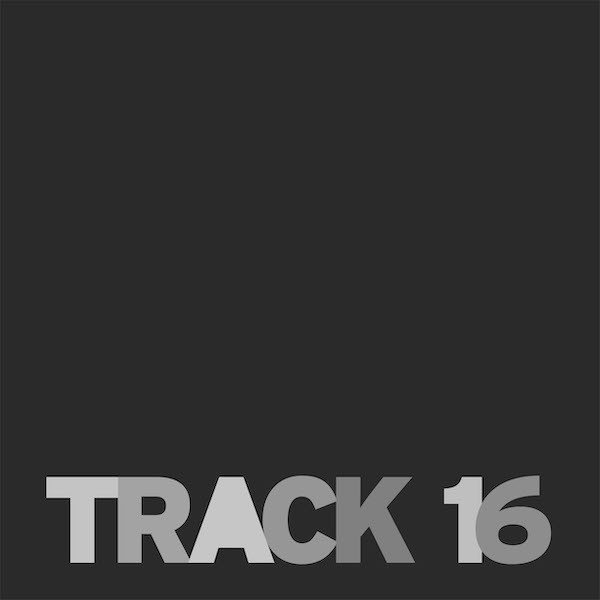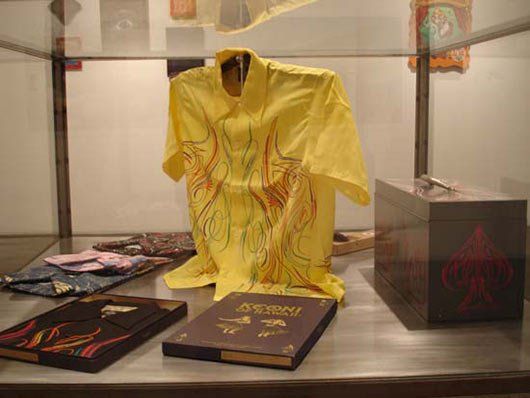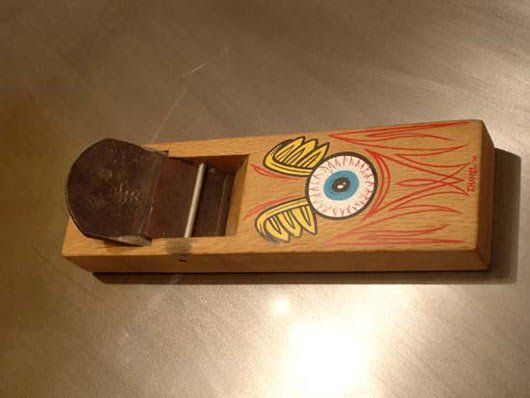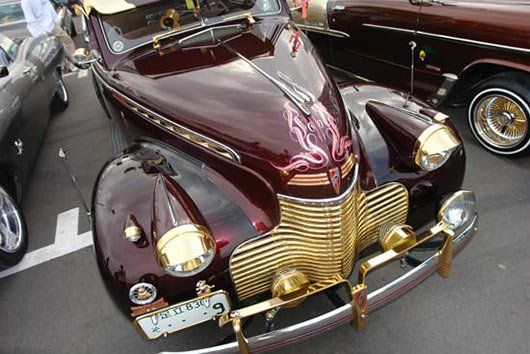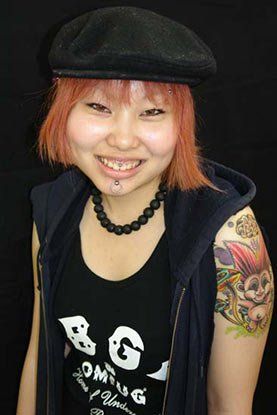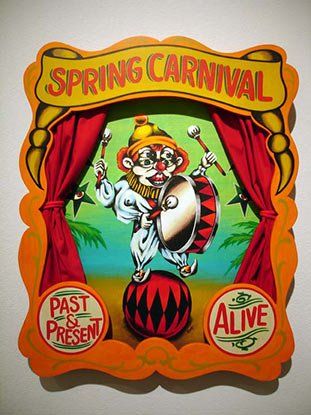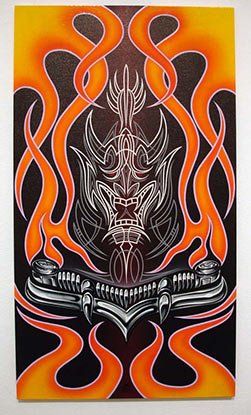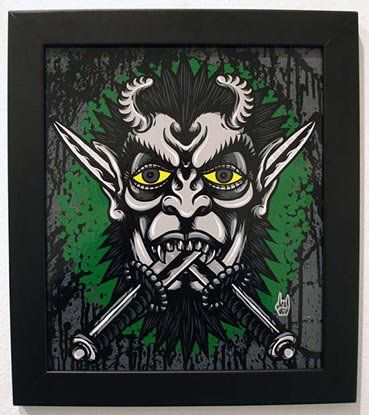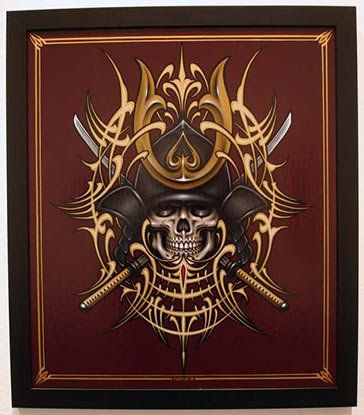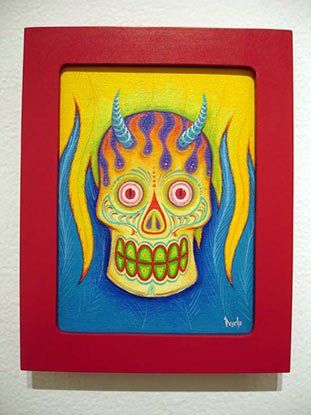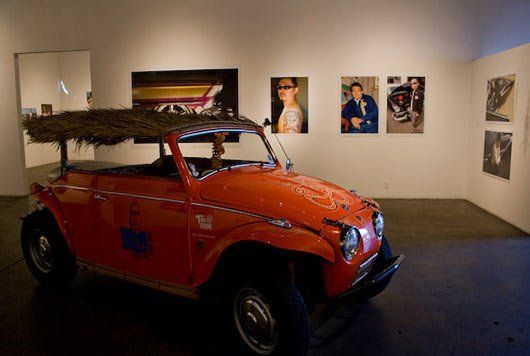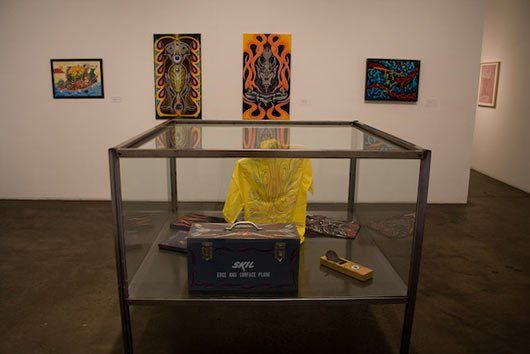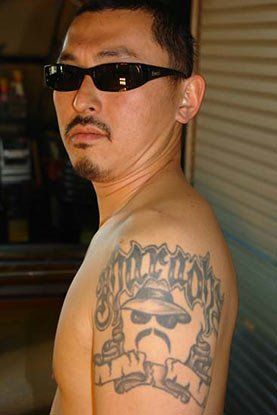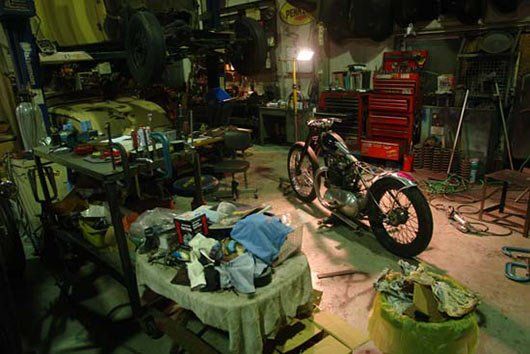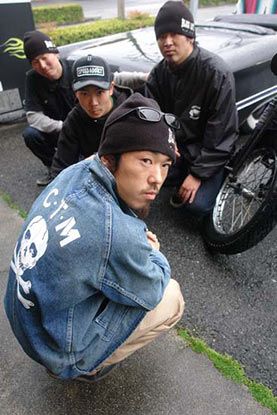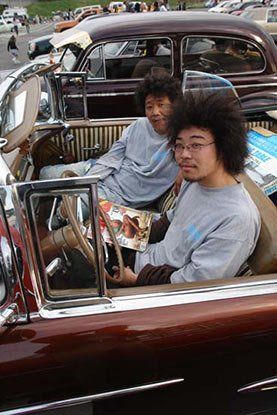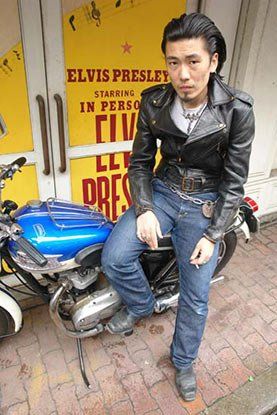Kustom Japan: When East Meets West
Japanese Take Hot Rod Culture to New Heights
May 17 through June 14, 2008
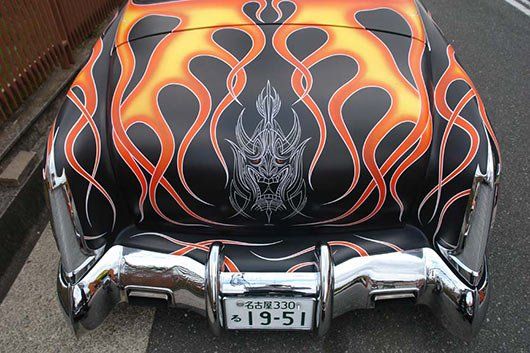
Slide title
Write your caption hereButton
Track 16 Gallery is pleased to present Kustom Japan: When East Meets West, photographs by Michael McCabe and original artwork by some of Japan’s premiere pin-stripers. The exhibition will be on view from May 17 through June 14, 2008, with an opening reception on Saturday, May 17, from 6 to 9 P.M. For more information, please visit archive.track16.com or call 310 264 4678.
Like a cultural anthropologist, photographer and writer Michael McCabe’s explores the outrageous style of the Kustom Kulture movement in Japan (the adaptation and assimilation of a California-style hot-rod culture)—documenting the dynamic relationship between tradition and change.
McCabe explains: “During the postwar period into the 1950s and 60s, Southern California youth embraced hot rods and custom cars as iconic representations that expressed the nuanced but raw power of youth. . . There is an interesting preoccupation among young urban Japanese about postwar American culture. It is not so much reproduction, but more creative re-invention . . . and cultural stylization is part of a nostalgic mystique that is being adopted.”
McCabe’s photographs document Japan’s Kustom Kulture, from car shows such as the “Mooneyes Tokyo Street Nationals,” to custom car shops, to pin-stripers’ studios, to completely stylized car or bike aficionados in their period garb.
One of Japan’s premiere pin-stripers, “Wildman” (Hiro Ishii), a former sign painter, watched pin-striper Ed “Big Daddy” Roth (who coined the name “Wildman” for Ishii) at a 1990s Mooneyes event and later spent time with him. He quotes, “I think about this now and know how special it was to be with Roth and to learn from him. At the time, it was all very strange and I didn’t realize the significance. What I really learned from Roth was about the soul and emotion of Kustom Kulture.” Mr. G. (Minoru Goto) is another of Japan’s well-known pin-stripers recognized for his “Krazy Kolor” style using lines and color combinations like magenta, green, purple, yellow and red.
Kustom Japan: When East Meets West will be shown in conjunction with: Don Ed Hardy: When West Meets East. Kustom Japan is accompanied by a 196 page book, published by (Hardy Marks Publications (2008) with text and photographs by Michael McCabe and a foreword by Don Ed Hardy.
Foreword by Don Ed Hardy, Kustom Japan, Hardy Marks Publications, 2008
When my longtime associate and savvy Asia expat Mike McCabe told me he was working on a book about the custom and hot rod scene in Japan, I was eager to publish it. I was aware of this subculture, but not the passion and depth of its complexity. On a personal level, its origins were crucial to my early youth in a Southern California beach town and, along with tattooing and wave riding, formed a triumvirate of style that resonates with me to this day.
In the mid-1950s, radically modified and elaborately painted cars cruised Highway 101 (a few doors from my house) and were poised in all their glory in the parking lot of Big Corona beach, where my crowd spent every possible waking summer moment. There we could scrutinize nuances of the bodies and interiors, club plaques, and amazing pin-striping, flames, and “weirdo” painting by the reigning masters—Von Dutch, Ed Roth, Dean “Kid Jeff” Jeffries, and others.
Additionally, the first sanctioned National Hot Rod Association drag strip was at the Santa Ana Air Field, about 3 miles inland. There, on Sundays, my friend, Len Jones, and I could see amazing cars and bikes in time-trial action. On forays to Long Beach, 25 miles up the coast, to hang out in tattoo parlors and dig the scene at the giant Nu-Pike amusement park, we were often able to attend huge car shows. There, we first saw stripers at work and Ed (not yet “Big Daddy”) Roth airbrush sweatshirts with “Krazy Painting.” Inspired, in 1957 I bought a compressor and airbrush and briefly pursued a similar, though less polished, career for local friends.
In the late 1960s I began studying Japanese art history in earnest and discovered 900-year-old Japanese paintings of Buddhist hells featuring elaborate and hypnotic flames. Startled, I began to wonder if the car painters were aware of these prototypical works. Moreover, scenarios of “hungry ghosts” populating the infernal zones, with their potbellies and shriveled limbs, were direct forebears of the weird little men (a signature element) of Dean Jeffries’ 1950s creations. When I questioned him about this in a 2005 phone conversation, he denied any knowledge of the Japanese works, though the resemblance is uncanny.
California popular culture has deeply impacted the world throughout the 20th century. Myriad aspects of Japan have influenced my life, and the East/West dialog still provides inexhaustible ground for inspiration. The Japanese visionaries and enthusiasts in this book continue to embrace, digest, perfect and transform powerful sub- and mainstream realms of expression. Mike McCabe’s pictures and words are a fresh and amazing testament to this process of reinvention.
TRACK 16 GALLERY
1206 Maple Ave, Suites 100 & 1005
Los Angeles, CA 90015
CALL TEXT
+1-310-815-8080
info@track16.com
Gallery hours:
Wednesday to Saturday 12-6pm
and by appointment
No entry fee. No reservations necessary.
TRACK 16 GALLERY
in the Bendix Building
1206 Maple Ave, Suites 100 + 1005
Los Angeles, CA 90015
+1-310-815-8080
Wednesday to Saturday
12-6pm
and by appointment
No entry fee. No reservations necessary.
©2024 Track 16, LLC
MAILING LIST
Thank you for signing up for our newsletter.
You can use the discount code T15 at our webshop for 15% your order of books, ephemera, and art.
Please try again later
NEWSLETTER
You can unsubscribe at any time.
